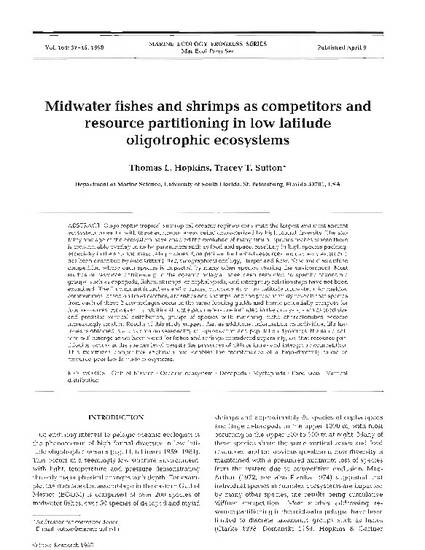
- Gulf of Mexico,
- Oceanic ecosystem,
- Decapods,
- Myctophids,
- Food web,
- Vertical distribution
Oligotrophic tropical-subtropical oceanic regimes constitute the largest and most ancient ecosystem on earth, with these enormous areas being characterized by high faunal diversity. The stability and age of the ecosystem have enabled the evolution of many similar species niches where there is considerable overlap in niche parameters such as food and space, resulting in high species packing, especially in the epi- and mesopelagic zones. Competition for limited resources undoubtedly exists and has been described by MacArthur (1972; Geographical ecology, Harper and Row, New York) as diffuse competition where each species is impacted by many other species sharing the environment. Most studies of resource partitioning in the oceanic pelagial have been restricted to specific taxonomic groups, such as copepods, fishes, shrimps, or cephalopods, and intergroup relationships have not been examined. The 2 dominant (numbers and biomass) components of low latitude midwater micronekton communities, based on trawl catches, are fishes and shrimps, and the present study reveals that species from each of these 2 assemblages occur in the same feeding guilds and hence potentially compete for food resources. However, as additional niche parameters are included in the analysis, such as food size and predator vertical distribution, groups of species with matching niche characteristics become increasingly smaller. Results of this study suggest that as additional information on individual life histories is obtained, such as data on seasonality of reproduction and population dynamics, the same pattern will emerge as we have found for fishes and shrimps considered separately, i.e. that resource partitioning occurs at the species level despite the pressures of diffuse intra- and intergroup competition. This minimizes competitive exclusion and enables the maintenance of a high-diversity fauna in resource-poor low latitude ecosystems.
Available at: http://works.bepress.com/tracey-sutton/57/

©Inter-Research 1998